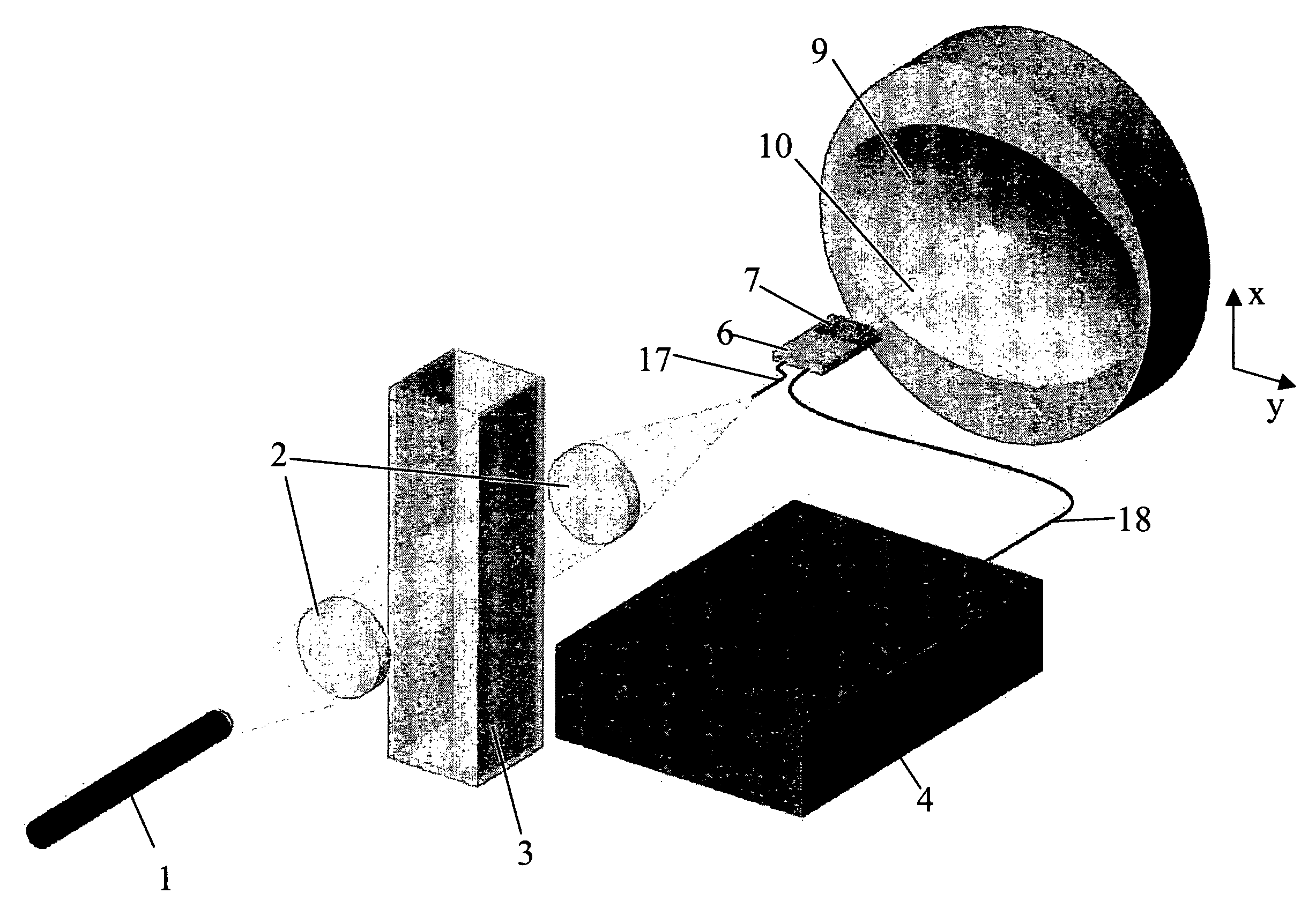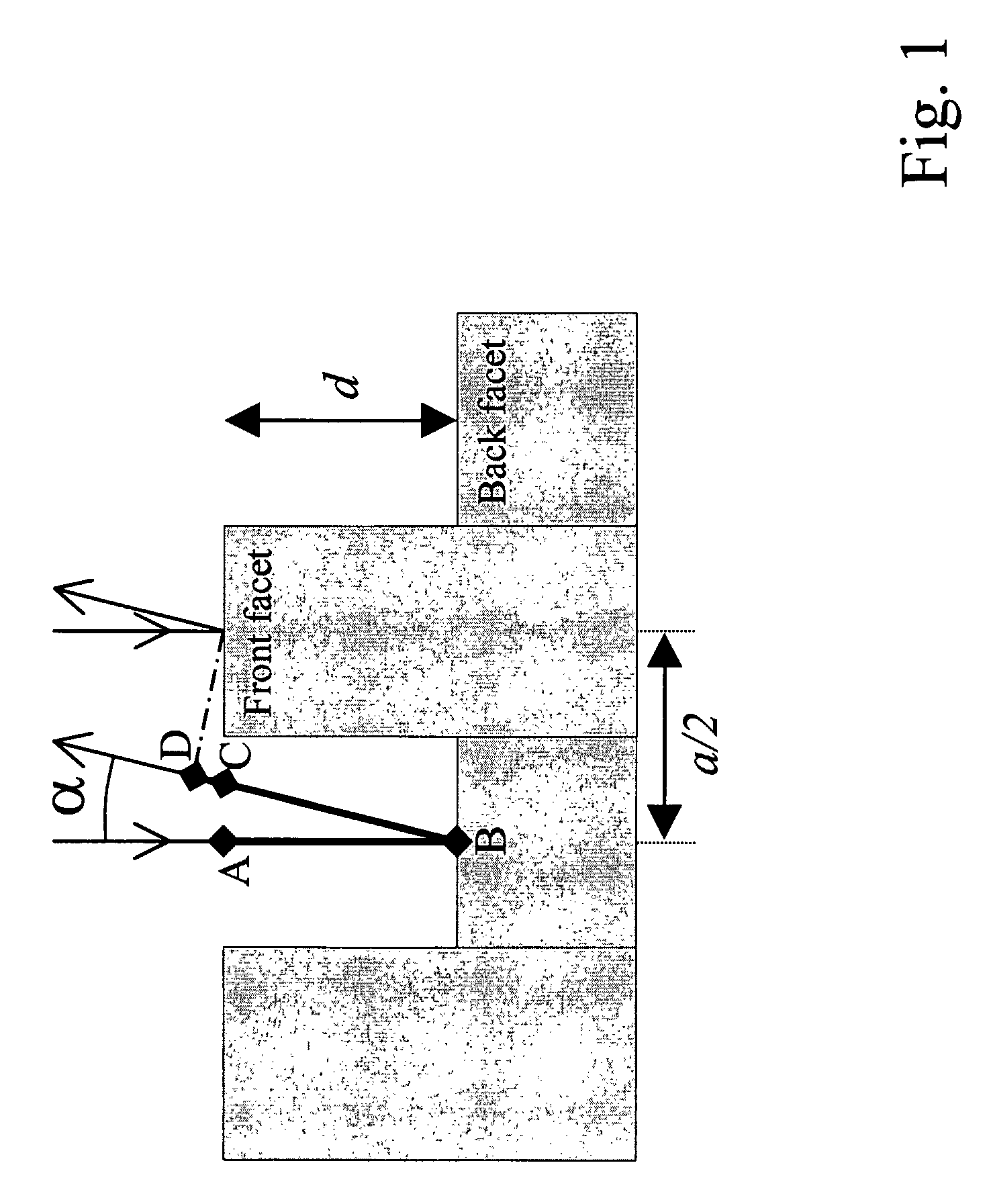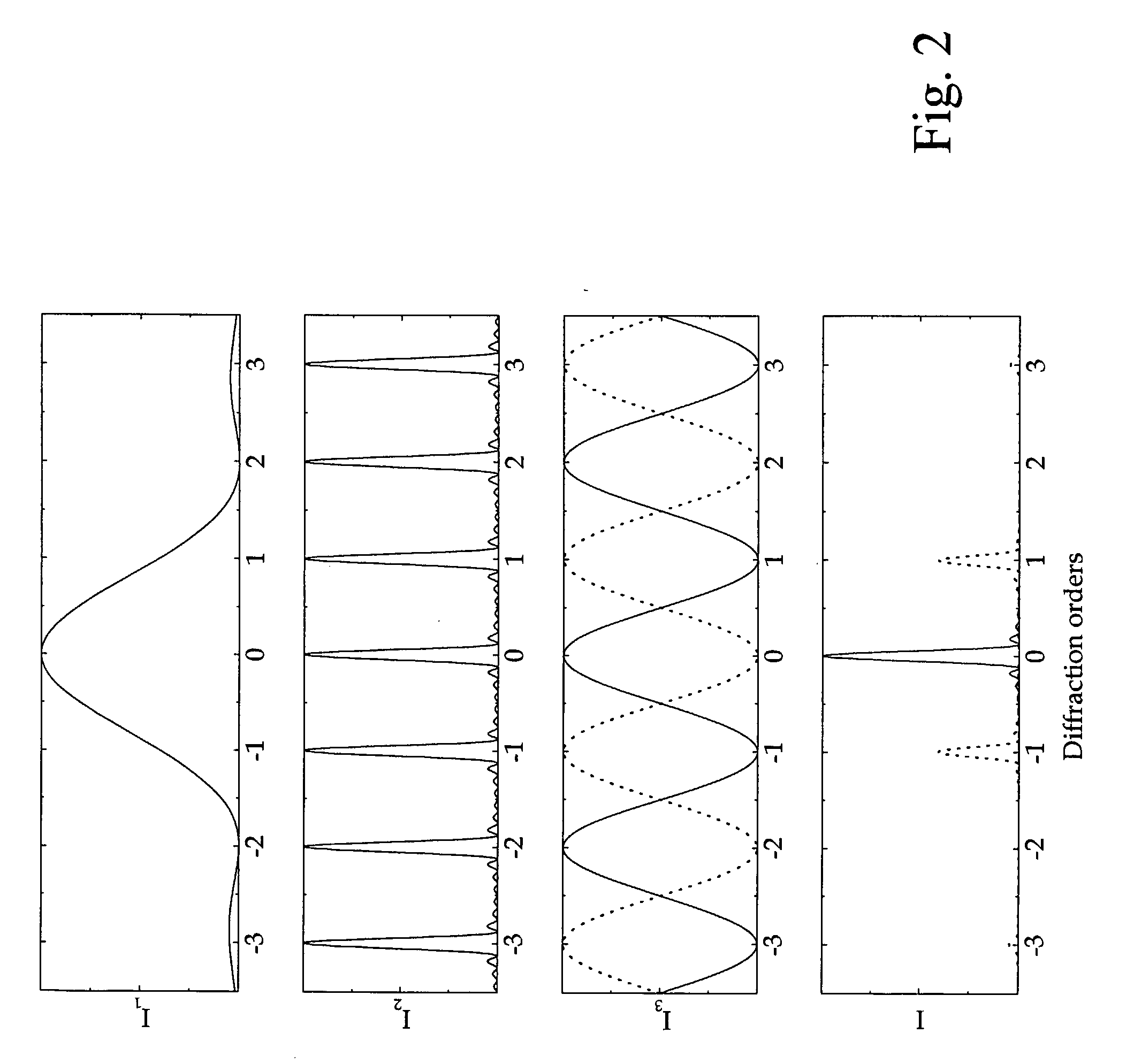Miniature Lamellar Grating Interferometer Based on Silicon Technology
a technology of silicon technology and lamellar grating, applied in the field of lamellar grating interferometer, can solve the problems of large size, high cost, and drawbacks of mems spectrometer, and achieve the effect of high reliability and enhanced miniaturisation
- Summary
- Abstract
- Description
- Claims
- Application Information
AI Technical Summary
Benefits of technology
Problems solved by technology
Method used
Image
Examples
Embodiment Construction
[0042]We present a lamellar grating interferometer realized with MEMS technology. It is used as time-scanning Fourier transform spectrometer. The motion is carried out by an electrostatic comb drive actuator fabricated by silicon micromachining, particularly by silicon-on-insulator technology. For the first time, we have measured the spectrum of an extended white light source with a resolution of 1.6 nm or in a second measurement of 0.5 nm at a wavelength of 400 nm, and of 5.5 nm and of 1.7 nm, respectively at 800 nm. The wavelength accuracy is better than 0.5 nm and the inspected wavelength range extends from 380 nm to 1100 nm of from 300-2600 nm, respectively. The optical path difference maximum is 145 μm or it is 500 μm in the second case. The dimension of the device is 5 mm×5 mm. or 7 mm×5 mm in the second case.
[0043]Spectrometry is widely used in industry and research labs. The methods are as many as different and are used in a variety of fields. In particular, Fourier transfor...
PUM
 Login to View More
Login to View More Abstract
Description
Claims
Application Information
 Login to View More
Login to View More - R&D
- Intellectual Property
- Life Sciences
- Materials
- Tech Scout
- Unparalleled Data Quality
- Higher Quality Content
- 60% Fewer Hallucinations
Browse by: Latest US Patents, China's latest patents, Technical Efficacy Thesaurus, Application Domain, Technology Topic, Popular Technical Reports.
© 2025 PatSnap. All rights reserved.Legal|Privacy policy|Modern Slavery Act Transparency Statement|Sitemap|About US| Contact US: help@patsnap.com



